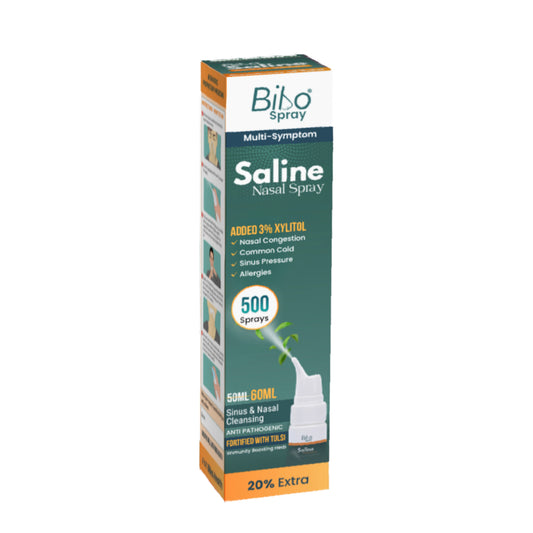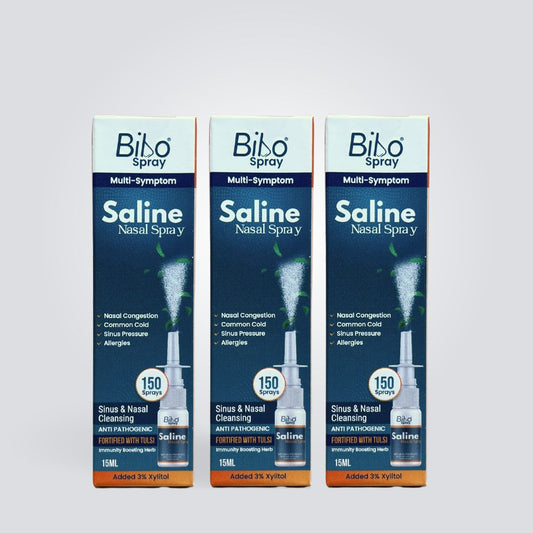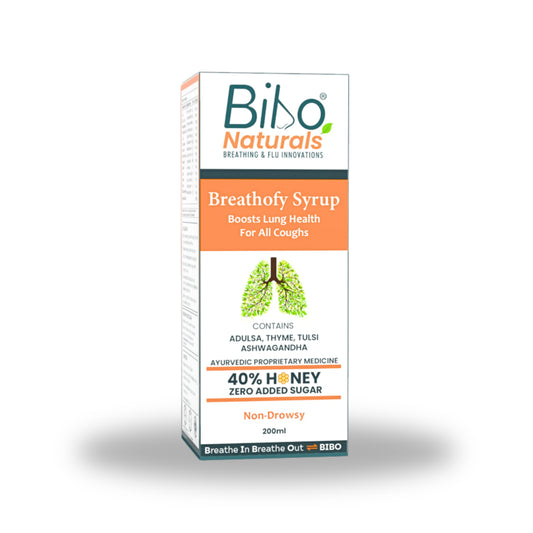Did you know that a total of 1.6 million people died from Tuberculosis in 2021? Throughout the world, Tuberculosis is the 13th leading cause of death and the second leading infectious killer after COVID-19!
A long-standing and potentially fatal infectious disease, tuberculosis, or TB, is brought on by the Mycobacterium tuberculosis bacteria. It has been a problem for humanity for centuries and is still a major global health issue today. Although it can affect other parts of the body as well, its primary effect is on the lungs. Throughout history, tuberculosis (TB) has posed a persistent threat to public health and is still a major global concern today. When an infected person coughs or sneezes, the bacteria are released into tiny respiratory droplets that can be inhaled by others, causing it to spread through the air.
Tuberculosis is a disease that can take on different forms, each with its own set of symptoms, and it poses a significant risk to people with weakened immune systems. It's crucial to detect and treat the disease early and take preventive measures to address this potentially fatal illness. In this blog, we'll explore various aspects of tuberculosis, including its types, causes, symptoms, and treatment options.
What are the types of Tuberculosis?
-
Pulmonary Tuberculosis (TB):
Pulmonary tuberculosis is the most common form of tuberculosis, which primarily affects the lungs. The bacterium, Mycobacterium tuberculosis, usually lodges and multiplies in the lungs causing various symptoms such as persistent cough, coughing up blood, chest pain, and difficulty breathing. This form of TB is highly contagious, as the bacteria can spread into the air through coughing or sneezing, infecting others who come into contact with the contaminated air. -
Extrapulmonary Tuberculosis:
Tuberculosis primarily affects the lungs but can also affect other parts of the body, known as extrapulmonary tuberculosis. It can target various organs such as the lymph nodes, bones, joints, kidneys, spine, and brain. The symptoms may vary depending on which organ is affected. For instance, spinal tuberculosis can cause back pain, paralysis, and deformities, while renal TB may lead to frequent urination, flank pain, and blood in urine. -
Miliary Tuberculosis:
Miliary tuberculosis is a severe form of the disease that occurs when the bacteria spread throughout the body via the bloodstream. This results in the formation of tiny lesions in multiple organs, which can be life-threatening. The symptoms of this type of tuberculosis can vary widely and may include fever, weight loss, and dysfunction of various organs. The term "miliary" is used because the lesions resemble tiny millet seeds when viewed on X-rays. -
Latent Tuberculosis Infection (LTBI):
Mycobacterium tuberculosis is a bacterium that can cause active tuberculosis in some people, but not all infected individuals become ill. In some cases, the bacteria remain dormant, leading to a condition known as latent tuberculosis infection (LTBI). People with LTBI do not show any symptoms, and they are not contagious. However, if their immune system weakens in the future, the bacteria can become active and cause the person to develop active tuberculosis.
Causes of Tuberculosis
Mycobacterium tuberculosis is the bacterial infection that causes tuberculosis. When an infected person talks, coughs, or sneezes, tiny respiratory droplets are released into the air, where they can be inhaled by others and spread the bacteria. The causes and risk factors associated with tuberculosis include:
- Close Contact with an Infected Person: Being in close proximity to someone who is actively infected with tuberculosis is the most common way to get the disease, particularly if that person is not getting the right treatment.
- Weakened Immune System: Tuberculosis is more common in people with compromised immune systems, such as those with HIV/AIDS, malnutrition, or specific medical conditions. This increases their risk of contracting active tuberculosis when exposed to the bacteria.
- Living Conditions: Overcrowded and poorly ventilated spaces, such as prisons, homeless shelters, and refugee camps, can increase the risk of tuberculosis transmission as the bacteria thrives in these environments.
- Substance Abuse: Drug and alcohol abuse can weaken the immune system, making individuals more vulnerable to tuberculosis.
- Travel and Migration: People who have traveled or migrated from regions with high tuberculosis prevalence are at greater risk for exposure to the disease, contributing to its spread in new areas.
- Healthcare Settings: Healthcare workers and patients in healthcare facilities are at an increased risk of contracting TB if proper infection control measures are not in place.
Symptoms of Tuberculosis
Tuberculosis symptoms can vary depending on the type and location of the infection. Here are some common symptoms associated with tuberculosis:
- Persistent Cough: A cough lasting more than three weeks with mucus or blood may indicate pulmonary tuberculosis.
- Fever: A low-grade fever is a common symptom of tuberculosis, particularly when the infection is active.
- Night Sweats: Excessive sweating, especially during the night, is another typical symptom of TB.
- Weight Loss: Unexplained weight loss, often accompanied by a loss of appetite, can be a sign of active tuberculosis.
- Fatigue: Individuals with TB may experience chronic fatigue, weakness, and a general lack of energy.
- Chest Pain: Chest pain or discomfort, which can be mild or severe, is common in cases of pulmonary TB.
- Shortness of Breath: This symptom is more pronounced in advanced cases of pulmonary TB when the lungs are significantly affected.
- Swelling of Lymph Nodes: Extrapulmonary TB can cause the swelling of lymph nodes, leading to discomfort or visible lumps.
- Symptoms Specific to Extrapulmonary TB: Extrapulmonary TB can cause various symptoms, depending on the affected location, including joint pain, back pain, difficulty urinating, and neurological symptoms in case of brain involvement.
It's important to note that not everyone with a TB infection will exhibit symptoms, particularly those with latent TB. This makes early detection and diagnosis crucial in controlling the spread of the disease.
Treatment of Tuberculosis
In order to treat tuberculosis, a combination of antibiotics and other supportive therapies is usually used. We call the antibiotics used to treat tuberculosis "anti-TB drugs." Ethambutol, pyrazinamide, rifampin, and isoniazid are the anti-TB medications that are most frequently used. Treatment plans differ based on the patient's general health and the type and severity of tuberculosis. Here is an overview of the treatment process:
- Drug Regimens: To lower the risk of drug resistance, a combination of several antibiotics is used to treat tuberculosis. For the full course of treatment—which can take anywhere from six to nine months for drug-sensitive TB—these medications must be taken as directed.
- Directly Observed Therapy (DOT): To ensure patients take their medications consistently, some healthcare systems use DOT. In DOT, a healthcare worker or trained observer watches the patient take their medication.
- Monitoring: Patients are monitored for the effectiveness of treatment and any side effects. Regular follow-up visits, chest X-rays, and sputum tests are used to assess progress.
- Isolation: Patients with active pulmonary TB may need to be isolated during the initial phase of treatment to prevent the spread of the disease.
- Preventive Therapy: Preventive therapy may occasionally be recommended to people with latent tuberculosis infections in order to stop the spread of active TB. This is typical of people with high-risk factors for developing active tuberculosis, like HIV.
- Treatment of Drug-Resistant TB: Specialized medication regimens are required in cases of drug-resistant tuberculosis (TB), which can be more difficult to treat. These treatment plans could include a mix of more recent medications and last longer.
- Supportive Care: Adequate nutrition, rest, and general supportive care are essential components of tuberculosis treatment to help the body fight the infection effectively.
Prevention of Tuberculosis
Preventing tuberculosis is a critical part of global efforts to control the disease. Here are some key strategies for preventing TB:
- Vaccination: Many nations use the Bacillus Calmette-Guérin (BCG) vaccine to prevent tuberculosis (TB), particularly in children. While it may not always be successful in preventing adult TB, it can lessen the severity of the illness if it is acquired.
- Screening and Testing: Identifying and treating latent TB infections through testing is crucial. This helps prevent the progression to active TB and reduces transmission.
- Treatment of Active Cases: Prompt diagnosis and effective treatment of active TB cases reduce the risk of transmission to others.
- Infection Control Measures: Healthcare facilities and congregate settings should implement infection control measures to prevent the spread of TB.
- Education and Awareness: Educating individuals about the risks of TB and the importance of early diagnosis and treatment is essential in reducing transmission.
- Addressing Social Determinants: Addressing factors like poverty, malnutrition, and overcrowded living conditions can reduce the risk of TB transmission.
Globally, tuberculosis continues to be a major public health concern. Because of its various forms, causes, and symptoms, early detection and treatment are essential to halting its spread. The emergence of drug-resistant tuberculosis introduces an additional level of intricacy to the disease's management. However, effective tuberculosis prevention is achievable with the right policies, including immunization, testing, treatment, and public awareness campaigns. To lessen the impact of tuberculosis and eventually work towards its eradication, the international community must continue to collaborate.
References:
- https://www.who.int/news-room/fact-sheets/detail/tuberculosis#:~:text=Overview,Tuberculosis%20is%20preventable%20and%20curable.
- https://www.mayoclinic.org/diseases-conditions/tuberculosis/symptoms-causes/syc-20351250
- https://www.cdc.gov/tb/topic/basics/default.htm
- https://my.clevelandclinic.org/health/diseases/11301-tuberculosis
- https://en.wikipedia.org/wiki/Tuberculosis




